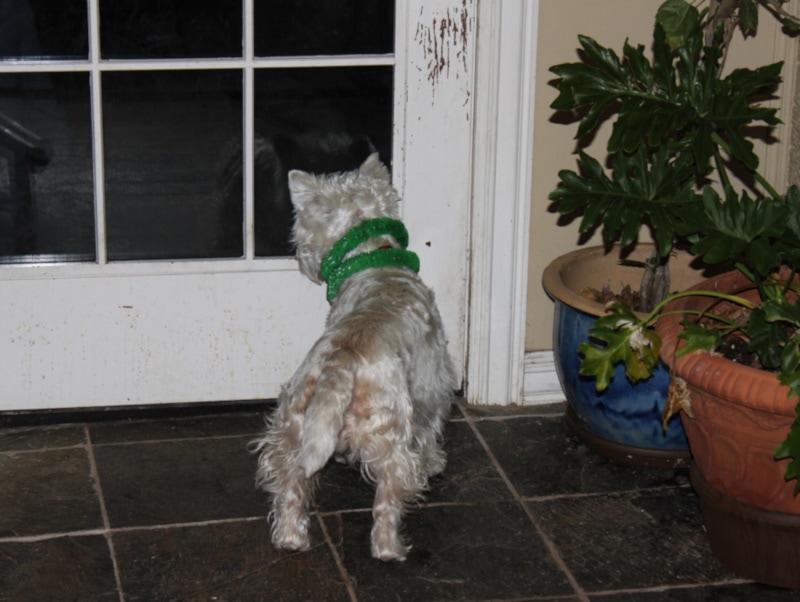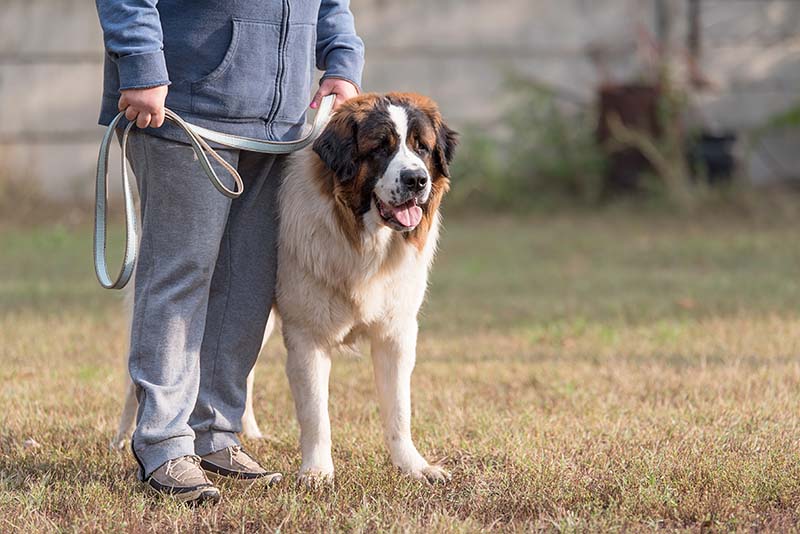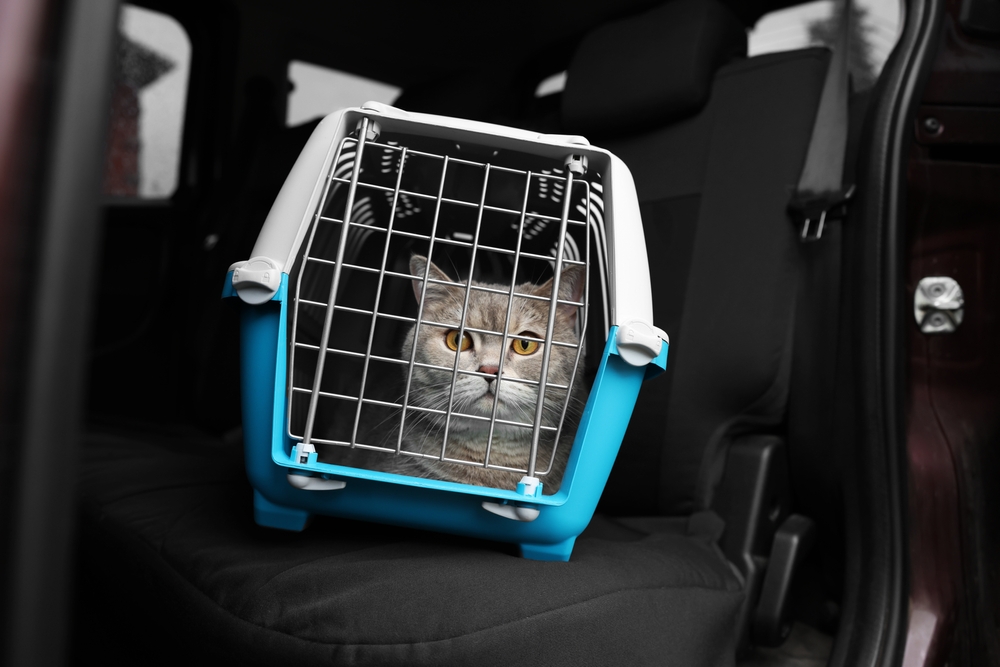[ad_1]
Canines scratching at doorways is a normal conduct, nonetheless it’d smash your as quickly as engaging and clear doorways. Finally, your doorways will placed on skinny with repeated placed on in a single spot, to not level out the annoying sound of canine nails scraping. Canines moreover run the prospect of getting nail accidents from scratching, significantly with inside wooden doorways.
Fortuitously, it’s simple to educate your canine to not scratch at doorways. The underside line is incentivizing right conduct and discouraging undesirable conduct—on this case, scratching at doorways. Listed beneath are some methods to coach your canine to not scratch.


The 7 Tips to Maintain Your Canine From Scratching the Door
1. Give Your Canine Retailers for Vitality
Some canine scratch as a result of boredom, nervousness, frustration, or attention-seeking behaviors. In case you’re employed prolonged hours and your canine is alone, it’s attainable that they’ll uncover retailers for his or her further energy. Often, this suggests dangerous behaviors like scratching at doorways.
You might forestall this conduct by taking your canine for prolonged walks. A drained canine is a peaceable canine that is a lot much less extra more likely to channel energy into ruining your points. Strolling your canine may also be good for bonding, significantly in case you allow your canine to odor and uncover their atmosphere.


2. Prioritize Playtime
Practice may additionally assist your canine, nonetheless they need further than merely bodily stimulation. Playtime and training help tire your canine out mentally, serving to to cease boredom and improve your bond. Play lessons like fetch, tug-of-war, a troublesome puzzle sport, and even going by some basic obedience and suggestions will give your canine the attention they need whereas moreover sparing your doorways from harm.
3. Redirect the Habits
Canines are good learners. You might reinforce the conduct you want—every intentionally and unintentionally—in the best way you react. For example, in case you ignore your canine until they scratch on the door after which yell or scold, they’ve succeeded in getting your consideration. Even unfavorable consideration is an enchancment over no consideration.
The intention of redirecting conduct is rewarding the conduct you want by substituting good points for unhealthy points. With scratching, you’ll redirect your canine to scratch a scratch pad as a substitute of the door. Interrupt your canine whereas scratching by calling them over and offering the selection, then rewarding them after they work together with that as a substitute of the door. Over time, your canine might be taught that the model new conduct (scratching a scratch pad) is preferable to the door.


4. Go away Them With Pleasant Distractions
Some canine don’t want to be alone. If it is a should to be gone for a really very long time, give your canine one factor to take up the time and focus their energy. For example, hiding treats spherical the house and allowing your canine to hunt for them while you’re gone takes loads of psychological focus and energy. Puzzle toys or lick mats are moreover good selections to take care of your canine occupied.
It’s essential to be careful with what you allow whereas your canine is alone, nonetheless. Some toys or chews shouldn’t be given unsupervised, resembling deer antlers or squeak toys in case your canine is a dangerous chewer. Moreover, in case you’ve quite a lot of canine within the similar household, steer clear of toys or actions that will set off them to battle over belongings.
5. Don’t Reward Harmful Habits
Consistency is important to canine teaching. Even in case you don’t suggest to, you’ll by likelihood reinforce the scratching conduct. For example, in case your canine scratches and likewise you immediately take them out for a stroll or to play, they will be a part of that scratching will get them what they want.
Instead, wait until your canine stops scratching the door for a second. Then, you’ll work together and reward a model new conduct. You want to reward them by stopping, not by likelihood connecting the scratching with pleasing actions and rewards.


6. Don’t Punish the Habits
Punishment like yelling at or hitting your canine doesn’t practice them to stop. It has a unfavorable impression, significantly in case your canine is anxious, as a result of it solely worsens the emotions of stress, nervousness, and concern. It might be reinforcing a conduct since your canine will get some consideration. In case you catch your canine in the middle of scratching or another dangerous conduct, interrupt them by calling the canine’s title and redirecting them.
7. Set up Underlying Causes
A canine that scratches at a door could merely be trying to find consideration or attempting to get to you, nonetheless there may probably be completely different causes. Part of correcting the conduct is managing triggers. Typically, a canine will scratch at a door on account of there are completely different canine, cats, vermin, or wildlife exterior that they should get to. Managing this conduct could comprise putting up limitations so your canine can’t see exterior or having fun with music while you’re gone to attenuate exterior sounds whereas moreover teaching your canine to favor completely different behaviors.
In case your canine scratches the door out of separation nervousness, that could be more durable to acceptable. Canines which have separation nervousness will even pant or tempo while you’re gone. Separation nervousness solely worsens with time and with out remedy. It’s best to hunt the recommendation of with a veterinary behaviorist to get a conduct modification plan which is able to comprise remedy to alleviate nervousness whereas engaged on teaching.
In case you concerned about your canine conduct we advise speaking with a vet
💛 🐶 Converse To a Vet On-line From the Comfort of Your Couch!
If it is important talk with a vet nonetheless can’t get to a minimum of one, head over to PangoVet. It’s a web-based service the place you’ll converse to a vet on-line and get the personalized advice you need in your pet — all at an fairly priced worth!


Should My Canine Be Crated?
In case your canine reveals dangerous behaviors like scratching the door, a crate or X-pen might be a lifesaver in your residence. You might maintain your canine away from triggers and protect every them and your door from harm while you’re away.
That said, it’s not adequate to put your canine throughout the crate and depart them for hours on end. Crate teaching accurately takes weeks or months of effort. Take your time with introducing the crate and using crate video video games to assemble a optimistic affiliation. Finally, your canine may favor to sleep of their crate with the door open.
Moreover, steer clear of using the crate as a kind of punishment. In case your reply is to position your canine throughout the crate as a “day journey” for unhealthy conduct, they’ll under no circumstances affiliate it with a spot of comfort or security. Worse however, their nervousness will solely enhance everytime you try and put them in it.
That said, in some situations, one of the best reply to one of these conduct is to make it bodily unimaginable for the canine to achieve their purpose of destruction so a gate or barrier is more likely to be one factor to consider.


Summary
A canine that scratches at doorways might be annoying at best, nonetheless they may do crucial harm to your doorways or injure themselves at worst. With fixed teaching, enrichment, and optimistic reinforcement, you’ll observe your canine to stop scratching your doorways and develop a stronger bond throughout the course of.
Featured Image Credit score rating: Vineyard Perspective, Shutterstock
[ad_2]














SillySocks
The article provides some practical solutions to a common issue many dog owners face. It’s interesting to see how behavioral training can have such a significant impact on preventing destructive actions like scratching at doors.